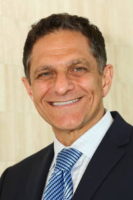22 Sep Decision-Making in Laryngology: Both Sides of the Story
MedicalResearch.com Interview with:
Dr. Mark Courey, MD
Senior Faculty,Otolaryngology
The Mount Sinai Hospital
New York Eye and Ear Infirmary of Mount Sinai
MedicalResearch.com: Would you tell us a little about yourself? How did you become interested in voice disorders?
Response: I became interested in voice disorders because during my residency in the late 1980’s there was little known about how to help patients with disorders of voice. The main instrument we use to evaluate vocal folds (the stroboscope) was just becoming clinically available. Only a handful of physicians had one available. We could not see vocal fold function and could only see the lesions on the vocal folds. We did not know how the lesions affected function. So many surgeons only treated patients with laryngeal cancer and told the others to be happy that they did not have cancer.
MedicalResearch.com: What are the most common causes of voice disorders? (ie polyps, cancer, overuse, allergies, reflux?).
Response: The most common causes of voice disorders are inefficient voice use patterns. This is when patients try to use their voice in a way that is not well suited for their physical stature or training. It is like wearing ill-fitting shoes. Patients end up with corns and calluses. Or when some people were heals they get bunions, but other people can wear heals without problems. The inefficient use patterns cause vocal fold lesions. Certainly reflux and infection may contribute, but they are not the underlying cause. If they were, then everyone with an infection or reflux would end up with vocal fold lesions and we know that is not the case. Also, if you cut the bunion or corn off but go back to ill-fitting shoes, it will likely come back. So you have to change the patient’s voice use habits. Then the lesion often goes away without needing to be taken off.
MedicalResearch.com: How do you best discriminate among the various diagnostic possibilities? What are some the treatments you have found helpful?
Response: You discriminate by taking a careful history and doing a careful examination. The time course of the disease and the things that the patient can do to make it better or worse often tell you what is going on. In addition, when you examine the larynx you need to do it under multiple conditions of pitch and loudness. You especially need to do it at the area of the voice where the patient is having the most problems.
MedicalResearch.com: What should readers take away from your report?
Response: The art and science of care for patients with voice disorders has come a long way in the last 25 years. If a patient has trouble with their voice, they should not accept the statement that it is just due to reflux. They should seek a physician who will listen to their specific complaints and perform a thorough examination of their voice and larynx.
MedicalResearch.com: Thank you for your contribution to the MedicalResearch.com community.
Citation:
AOS-HNS presentation:
Decision-Making in Laryngology: Both Sides of the Story
Note: Content is Not intended as medical advice. Please consult your health care provider regarding your specific medical condition and questions.
More Medical Research Interviews on MedicalResearch.com
[wysija_form id=”5″]
Last Updated on September 22, 2016 by Marie Benz MD FAAD

